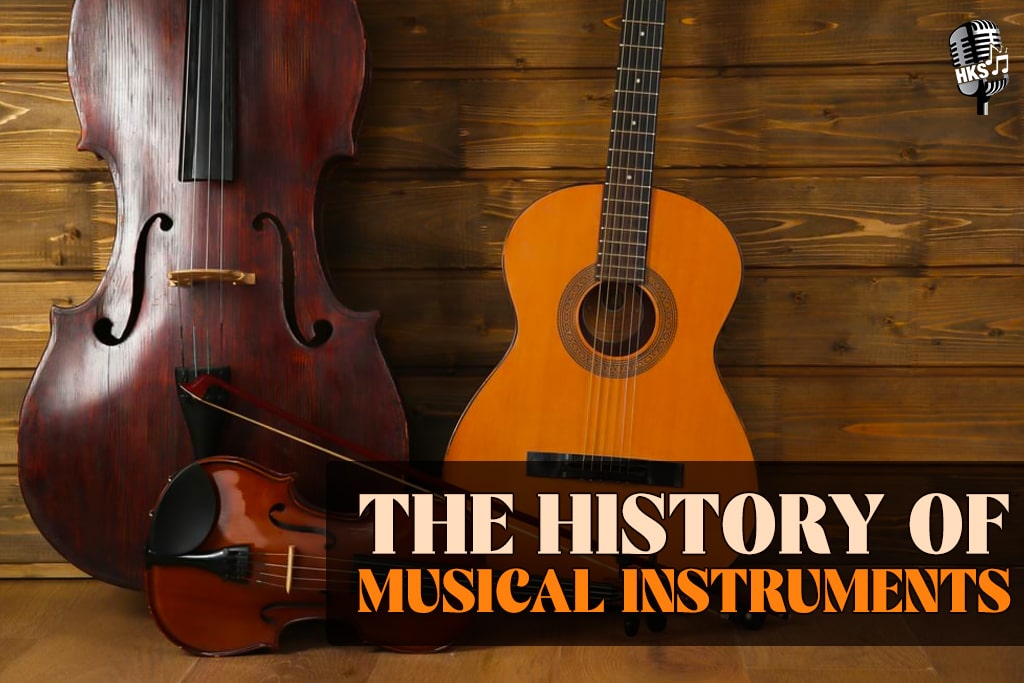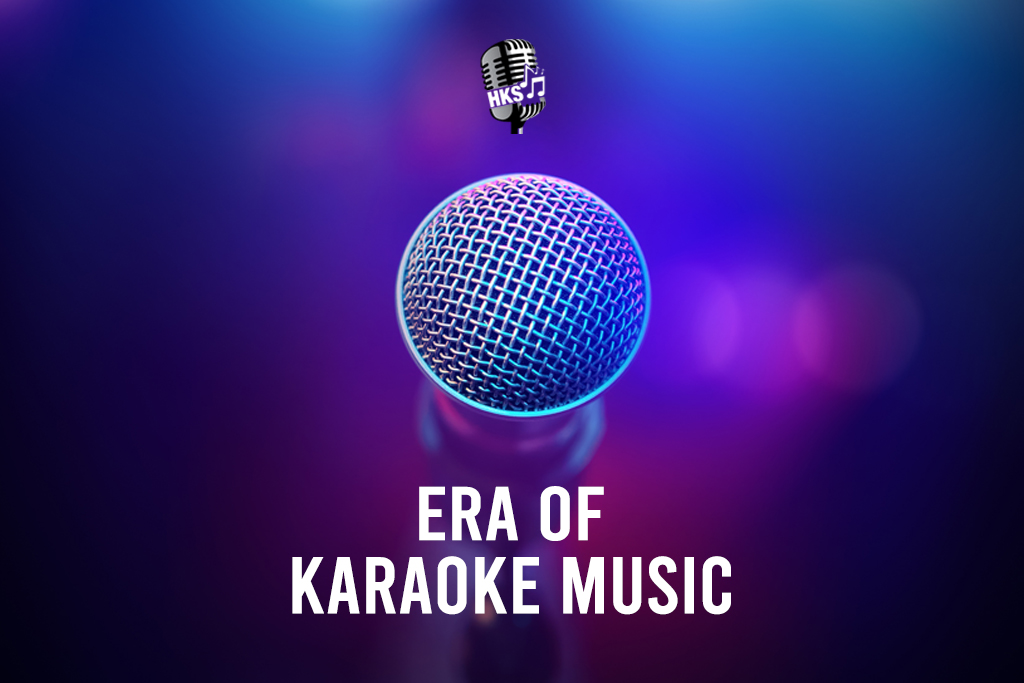Black Friday Store Wide Sale | 35% Off | USE COUPON CODE - BLACKFRIDAY35

Have you ever wondered about the instrument that people generally listen to or are eager to learn? Where does it originate? Music is the background score of life, and the instruments we listen to depict the emotions. There's no denying that music is a significant part of our lives. Suppose you're like me, a lover of music. In that case, you must have a keen interest and curiosity to learn about the history of music, the history of karaoke, and the history of your favorite legends. This little guide is for you to understand the past and the evolution of musical instruments. Slight changes in the making of the instrument lead to its evolution and development.
The history we are talking about includes the history and progress of multiple musical instruments. Before starting their journey, I would like to introduce a little history of music. Music has been found with archeological evidence in different cultures. It was revealed in the Palaeolithic period with whistles and shell trumpets and clay drums in the Neolithic period. Music was spread among cultures and was a crucial element in tying them together from Mesopotamia, the Mediterranean, India, America, and East Asia; all were diversified, with musical representation largely visible in their culture. The arctic residents made flutes out of bones and made many other instruments with skin, wool, bone, and other natural elements. The flute made out of bones existed 35000 years ago in the Palaeolithic era and is perceived as one of the oldest musical instruments to exist, whereas the song that was firstly written dates back to 4000 years.
Another instrument loved by youngsters, mainly of both generation z and millennials, is the guitar, which earlier was known as the chordophone with around 4 to 18 strings. It was found around some 3000 years ago and is considered a predecessor of today's guitar. Several other instruments similar to the chordophone are the European lute brought by the Spanish peninsula, and even the modern-day guitar originated in Spain. The sound of an instrument is affected due to many factors, such as the material it is of, its shape, and size. Music instruments in the earlier centuries were not just used for religious ceremonies but also for rituals, artistic events, dance, and medicine.
Accordion is one of the instruments often associated with western culture and a part of their celebration process. It uses reed and air to curate sound; it is played by pressing thin strips of material known as a reed. Air is then produced by compressed bags which expand with a blast of air known as bellows. This creates a musical sound that can be controlled with keys and buttons to produce varying pitches. One of the earliest double bass instruments originated in 1516. It is called by multiple names such as bass violin, contrabass, bass, and upright bass. The history of musical instruments also depicts their work's craftsmanship and delicate appearance, with defining imagery painted on numerous instruments like the Indian Veena.
Victor-Charles Mahillon, an acoustician and the Belgian instrument maker, categorized four types of classified instruments. The first one is auto phones. Autophones produce sounds made with sonorous material such as the bell or the rattle. The second one was the membranophones, sound made with stretched skin caused to vibrate such as the drums. The third is aerophones, which produce sound by a vibrating air column such as the wind instruments. The next one is chordophones. As explained above, these are stringed instruments such as guitar or sitar. The fifth class is the electrophones added later to the list. It produces sound by vibration with an oscillating electric circuit. It was only in Europe that keyboard instruments were found. Keyboard instruments most remarkably showed the most incredible progress from the early middle ages to the 17th century. In Europe, it became a tradition in the 17th century to develop and create instruments at home. The clarinet emerged at the end of the 17th century, extended till the 19th century as a contrabass and later as a subcontrabass. The music ensembles are different and distinguished worldwide, but the apparent difference between indoor and outdoor music lies in the pitch and tone. The indoor music as we know it is calm, soothing, and pleasing to the ears to listen to, whereas the outdoor music is louder, ceremonial, and apt for a vast crowd.
This led to the orchestra's establishment in the 17th century, which transformed the use of indoor musical ensembles such as the bowed strings by enlarging the sound to fit the outdoor ensemble. One such instrument is the trumpet which dates back to 1500 BCE and is made of conch shells and animal horns. However, it wasn't until the 14th or 15th century that trumpets or brass instruments were recognized as musical instruments. In the eighteenth century, Mozart's father wrote concertos exclusively for trumpets. Another one in this category is the trombone, known as Tromba in Italian, simply translating to a large trumpet in English. The trombone was first seen in the 15th century.
Electronic organs are not much older. Even the one considered 'old' only came into existence in 1928. It was only found in the late 19th century and the early 20th century that the reed organ or the electric organ made its appearance, and today is famously known as the harmonium. The electronic instruments came into existence much later. An electric instrument is one that is produced with the complete means of electricity. J.B. Delaborde developed and created the first electronic harpsichord in 1761 and had many electromechanical instruments that continued to be invented in the 19th century. In the 1960s and the 70s, the widely used electronic instruments were computer synthesizers that shifted to digital synthesizers and musical workstations with advancements in digital technology. During World War Two, the tape recorder was used as an electronic musical instrument, which transformed into sampling instruments. Sampling instruments allow a musician to transform a sound waveform, process it, and then play it under musical control. Today, musical instruments and sounds can be created digitally with minimum effort with the help of software.
To sum up
Musical instruments have a history dating back to 35000 years ago, when musical instruments were made out of raw natural resources without adultery, such as bones and skins. The transformation and evolution were rampant in the field of musical instruments that essentially can be attributed to the ritual, societal and traditional ceremonies. The musical instruments also served as a symbol of multiple personality traits. Today, the instruments are made available through online mediums. Similarly, songs and Karaoke Online are also made available at the Hindi Karaoke Shop. We also gladly serve the service of song composition, mixing, and mastering to give the complete touch to your song.








Vinod Paul
3 years ago
I think your blog is right for me. After searching long and hard for this topic, I finally found it. You have written it very well, keep it up!
Sahil Singh
3 years ago
The topic is quite interesting and informative.
Rashmi Srivas
3 years ago
I appreciate your informative content and the way you wrote it.
Ravi Dubey
3 years ago
Wow! It is amazing how long music has existed. Overall, I found your blog quite interesting.
Anamika Sharma
3 years ago
I enjoy reading about music and its history, and I always find interesting topics so that I can enhance my knowledge.
Ram Shah
3 years ago
History is always my keen interest, no matter what the topic is. So, I have read your entire blog and it was a nice experience to learn about musical instruments.
Mostafiz Zaman
3 years ago
The topic is interesting and contains a lot of information. Well done!
Jagrati Pawar
2 years ago
Thank you for sharing this informative and engaging article! It has deepened my appreciation for the artistry and craftsmanship behind musical instruments.
Prachi Sharma
2 years ago
Wow! It is amazing blog quite interesting.